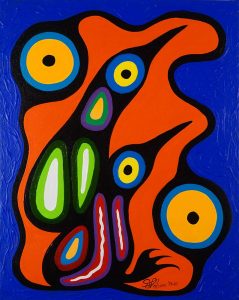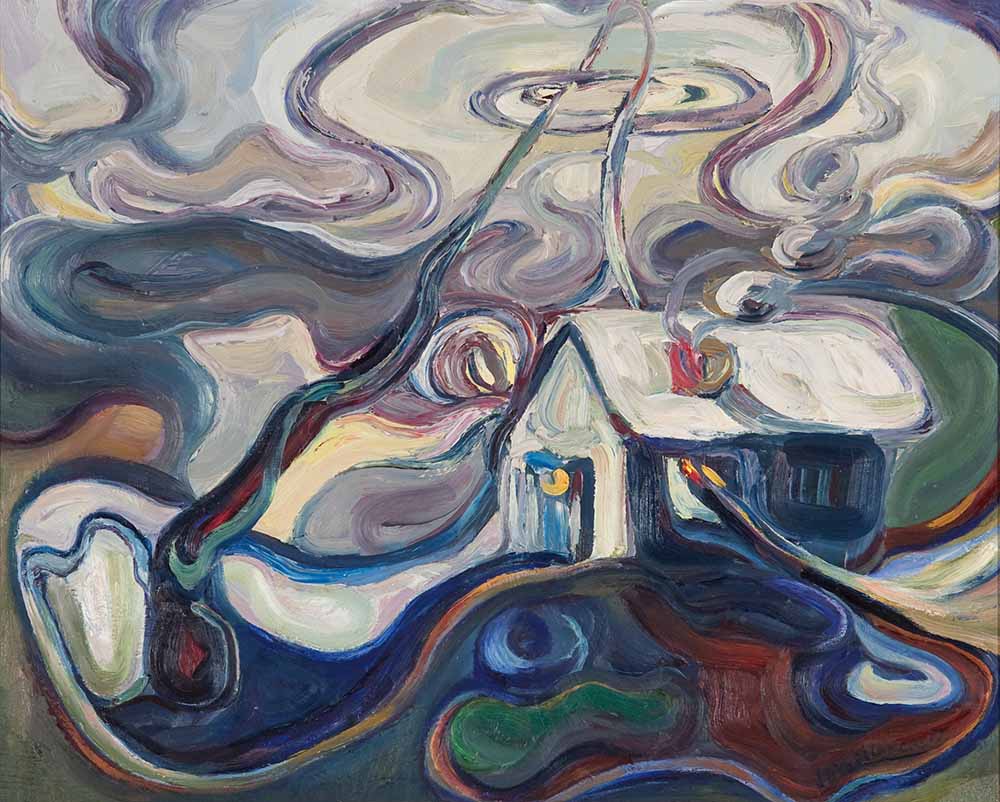The Bipolar Giant, a Living Legend! – Part Two
Allow Guillaume Beaulieu to recount his legend in his own words and in its original language by clicking the link below. View the full transcript in English here.
In the first days of habitation in this territory, but one archipelago now emerges from the water before the giant ceases to count time in terms of millennia. While decelerating time, he climbs onto an island and makes the wise decision to use his powers to shrink his size, to better inhabit his archipelago.
In lunar solitude, the islander lets his skin turn copper in the vibrant sun. To see in the rising fast morning mists, “Roger Pellerin” clouds pilling up, then travelling to the lands further east, he likes his lands to be more visible each year. They are multiplying fast, for a “Frank Polson” fauna, from which the forces are eaten by the giant to make sure the beasts’ qualities are within him. Everything in this landscape serves him well, and by forcibly surveying his territory on three watery highways north-south, his surroundings become intelligible.
Sometime after, for lack of having healed ancient soul-numbing wounds, our giant has become fragile and bipolar. When on a “high”, driven by Herculean like energy, he is prodigious and creates a kingdom. When on a “down”, he is confounded by pollution, looting and abandonment.
During his good moments, the giant falls in love and Wed’s a beautiful Anishinaabe (Algonquin) woman. With her lavishing contours, she brings him to his knees. With her flair and clairvoyance, she knows how to fulfill their joined destinies. Together they are happy, proud and beautiful, in near self-sufficiency on the edge of a world continent. It’s before his skin begins to become paler (so not to say white) from hiding out in his humid wooden log cabins, giving free rein to his neuroses and anxieties in dark times. From a mountain to a crack with its crushing mood, he begins to mistreat his wife, then renounces her, as well as the beautiful child they had together, he lets them live on the other side of power, from a distance. She and the child painfully live this separation and this alienation, to the point where they lose their bearings, getting lost in the maze of this vain search for consideration.



